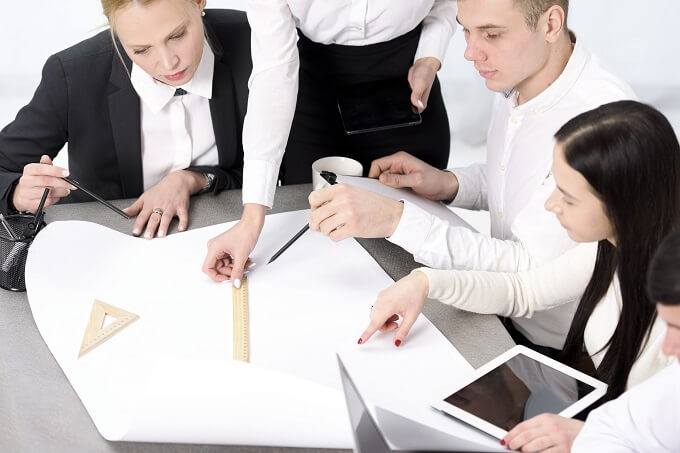Corporate training has changed greatly from the olden days of sitting in a classroom and taking notes. Nowadays, technology has made training easier and more fun! One great way to train employees is through gamification.
In this article, we'll talk about gamification, why it's so helpful for corporate training, how to use it, and some examples of gamification in action.
The following article covers:
What is Gamification in Corporate Training?
Why is Gamification So Helpful for Corporate Training?
Examples of Gamification in Action
The Importance of Gamification in Training
The benefits gamification offers
Ways to Use Games to Teach Corporate Training
What is Gamification in Corporate Training?
Gamification in corporate training means using game design techniques to make learning fun and interesting for employees. It has become popular recently because it makes learning interactive and engaging.
Gamification involves taking game-like elements, such as points, badges, levels, challenges, and rewards, and adding them to corporate training programs.
This makes the training more enjoyable and motivates employees to learn and improve their skills. Gamification increases motivation, retention, and knowledge transfer.
How Does Gamification Work?
Gamification works by using psychological principles that make games so fun and addictive. Games provide instant feedback, a clear sense of progress, and a feeling of accomplishment.

Employees are more likely to be motivated and engaged when these same elements are used in corporate training.
Gamification isn't just for computer-based training or e-learning, either. It can be used in traditional classroom settings. For example, a classroom-based training program can be designed to include team-based competitions, quizzes, and challenges.
Why is Gamification So Helpful for Corporate Training?
Gamification is helpful for corporate training as
- it makes learning enjoyable
- employees become engaged and motivated, so they're more likely to remember and apply what they've learned in their work
- training becomes more efficient by reducing the time it takes to train employees
Examples of Gamification in Action
There are many ways to use gamification in corporate training.
For example, a company might create a training program that includes a game where employees earn points for completing tasks. The employee with the most points at the end of the game could win a prize.
Another example is a training program that uses badges to reward employees for completing certain tasks or milestones.
The Importance of Gamification in Training
Training is an integral part of any job, and gamification can make it even better! Here are some ways it can help:
Real-World Practice
Gamification lets employees practice important skills in a safe and fun way. By simulating real-world scenarios, employees can learn how to handle situations they may face.
Instant Feedback
With gamification, employees get feedback on their performance right away. This can help them see where to improve and adjust their learning strategies accordingly.
Identifying Skill Gaps
Gamification can help organizations identify areas where employees need more training. By tracking progress and performance, organizations can tailor their training programs to meet the needs of their employees.
Engagement and Motivation
Gamification makes training more engaging and fun! Employees are more likely to participate and stay motivated when training is interactive and enjoyable.

Here are some interesting facts about gamification in training:
- 87% of employees say gamification makes them more engaged in training.
- It can encourage teamwork and collaboration among employees.
- It can be used for many different types of training.
- It can be personalized to the needs of each individual learner.
The benefits gamification offers
Let’s also take a look at how gamification may benefit you and the employees.
Improved Learning Outcomes
It uses techniques like repeating information, giving feedback, and offering rewards to make learning more effective. Thus, people remember the learned material better.
Cost-Effective
Traditional training methods, like classes and online courses, can be expensive. So, organizations can save money by reducing the need for expensive in-person training sessions.
Gamification is also cost-effective as it can be used to train large groups of people at once. Gamified training modules are online and can be adjusted to fit many learners.
However, the cost-effectiveness of gamification depends on different factors:
- how complicated the game mechanics are,
- how good the game design is,
- how well the game aligns with the learning objectives
Non-monetary staff appreciation can also be a cost-effective way to motivate employees and improve their performance. Simple gestures like recognizing their hard work, providing positive feedback, and offering opportunities for growth and development can go a long way in boosting employee morale and productivity. By combining gamification with non-monetary staff appreciation, organizations can create a fun and engaging learning environment that also shows employees that their hard work is valued and appreciated. This can lead to a more motivated and loyal workforce, ultimately benefiting the organization's bottom line.
Customizable
Gamification can be tailored to meet the specific needs and learning styles of individual employees, which makes it a highly customizable training and development tool. This customization leads to better engagement and more effective learning outcomes.
For example, some employees might like competitive challenges, while others might prefer collaborative activities. Gamification can be designed to accommodate both approaches or even offer a combination of both.
It can also be tailored to address specific areas of knowledge or skills that employees need to develop.
Making Learning Fun and Effective
When employees are interested and motivated to learn, they do better at their jobs. Gamification can help by using games and challenges to make learning more interactive and enjoyable.
It encourages healthy competition among employees. When employees feel like they're part of a team and have a goal to work towards, they're more likely to work hard and do their best. Plus, when people are rewarded for their hard work, they feel happier and more satisfied with their job.
Ways to Use Games to Teach Corporate Training
Companies can successfully use games to teach corporate training by following some best practices. Here are some ways to use games to teach corporate training:
Set Clear Goals
Before using games to teach, companies should define clear goals that they want learners to achieve. These goals should be specific, measurable, and aligned with the company's overall objectives.
Create a Game Plan
Companies should create a game plan that outlines the gamification program's rules, mechanics, and rewards. The game plan should also clearly explain how the program aligns with the company's goals and objectives. Using an online assignment calendar can help create a game plan for completing all tasks on time.
Use Different Game Mechanics
Games should use different mechanics like points, badges, leaderboards, challenges, and rewards. This makes the game more interesting and keeps learners motivated to learn.
Give Feedback Quickly
Quick feedback is essential in games because it helps learners see how they're doing and what they need to improve. Feedback should be clear and help learners apply what they've learned.
Encourage Group Learning
Games should encourage group learning, where learners can collaborate and share knowledge. This creates a community of learners who support and learn from each other.
Examples of Gamification in Corporate Training
Here are some examples of gamification in corporate training:
Uteach
Uteach is a platform that helps businesses provide online training to their employees. It has many features, like course authoring tools, interactive quizzes, and assessments.
With Uteach.io, companies can make their own courses and track their employees' progress. The platform is easy to use and has customer support to help businesses improve their training programs.
Deloitte's Leadership Academy
Leadership Academy is a special training program created by Deloitte, a company that helps other businesses with their finances and strategies. This program is designed to help Deloitte's employees become better leaders by using games to make learning fun and engaging.
In this program, employees participate in different activities such as playing simulations, studying cases, and doing role-playing exercises. They earn rewards like badges and points for their achievements and can see how they compare to their colleagues on leaderboards.
IBM's Innov8
IBM's Innov8 program teaches employees about business process management through a fun game.
The game uses a simulation to help learners understand how business processes work and how to improve them. The game includes quests, levels, and achievements to keep learners interested and motivated to learn.
McDonald's Till Training Game
McDonald's Till Training Game is a fun way for employees to learn how to use the company's point-of-sale system.
It's like playing a game that takes place in a busy McDonald's restaurant. Employees learn how to take orders, handle cash, and provide great customer service. The game has points, badges, and levels that motivate employees to do their best.
SAP's Road Warrior
SAP's Road Warrior is a fun way for employees to learn how to sell SAP products. It's a game that takes you on a journey as a salesperson and teaches you how to sell to customers.
The game has different challenges that help you learn new sales skills, and you earn rewards like badges and high scores for doing well. It is so engaging that employees are motivated to keep playing and improving their sales skills.

Summary
Gamification is a way to make learning fun and exciting for employees during corporate training. It has many benefits, such as making learning more interesting, improving learning outcomes, being cost-effective and customizable, and improving performance.
To use gamification successfully, companies need to have clear goals and ways to measure success, create a plan, use different game mechanics, give feedback quickly, and encourage social learning.
Some examples of successful gamification in corporate training include Uteach, Deloitte's Leadership Academy, IBM's Innov8, McDonald's Till Training Game, and SAP's Road Warrior.


![How to Start Online Coaching Business [Proven Strategies]](https://d35v9chtr4gec.cloudfront.net/uteach/articles/LXoil0HbCqKEO2lAdpzG-1693384984/start-online-coaching-business.jpg)
